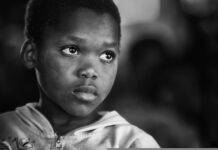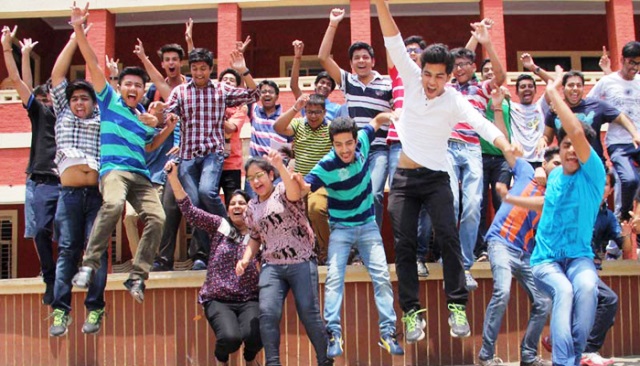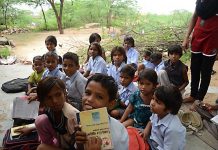The indefinite closure of schools, colleges, and universities as a precautionary measure to control the spread of COVID-19 is posing new pedagogical concerns in the methods of teaching and learning. Online mode of education has emerged as an alternative, but to ensure that, we first need to provide (a) Access to smartphones/laptops/computers, (b) Good internet connection, (c) A peaceful state of mind to be able to teach and learn. Meanwhile, the increased dependence on gadgets/technological tools is also changing the meanings of work. From a traditional classroom (face-to-face) interactions, we have shifted to a time regulated audio/visual exchange; on the one side of which ‘the teacher’ delivers and on the other side, ‘the student’ is expected to learn. In the process, both are erred continuously by either electricity or internet connection, ignoring the disturbances caused by other members in the household. It is a privilege, after all, to have an exclusive room, with a proper sitting arrangement and a multi plug-in option nearby. As per Census data (2011), 69% of the total houses in the country have only one or two-room houses; 3.9% have no exclusive room.
Glimpses from Rajasthan
In Sheo, a small village in Barmer district of western Rajasthan, there is no electricity for prolonged periods with lack of internet and network connectivity. Teachers have to walk to the top of a hill to get network on the phone.
In Kuloth Khurd, a large village in Jhunjhunu district, the children are opting for either self-tutoring or taking tuitions by the college-going youth. With parents earning options skewed during the lockdown, they do not have money to recharge the phone for even talk time balance, leave aside recharging internet package. Schools (both private and government) were completely shut till mid-May with no guidelines about online teaching.
In Padampur, a town in Sri Ganganagar district, teachers have made What’s App groups to communicate daily lessons to the students; but students one by one have left the group. The reasons are either unavailability of mobile phones or internet connections.
A Master’s student from a college in Dungarpur, a city in the southernmost part of Rajasthan, shared that they were also asked to submit assignments through What’s App. A teacher’s feedback on one of the assignments in the group made the other students hesitant to share. Teacher’s input in a classroom even in the presence of other’s students doesn’t cause shame, however, work being discussed on digital platforms, student concern iss about privacy and fear that other students might mock them.
Challenges
Globally, about 89 % students are out of school given the closure of schools as per UNESCO estimates. In the Indian case, children are being forced out of schools into farms and factories worsening the child labour problem. The economic crisis increased domestic and care work responsibilities, and extreme poverty is entrenching the existing gender disparities in access to education. Further, the limited social protection measures expose the girls to drop out, sexual exploitation, forced marriages, and early pregnancies.
Moreover, the impact of school closures affects children differently in rural and urban spaces; there are educational, infrastructural, and technological inequities. The economically advantages families can pull off the resources to use additional online teaching applications where extra classes, revisions, counselling support, are added benefits to enhance learning practices. While, on the other hand, families from vulnerable economic or social background do not even have access to adequate resources to provide online education to their children. In India, the numbers indicating the use of the internet or access to a smartphone is expanding year by year. In 2020, the internet penetration rate stood at around 50%, with about 629 million population actively using mobile internet. By 2019, only 28 % females had access to the internet in rural areas and 38% in urban areas.
What about the future of children in distress situations, in refugee camps, children of stranded migrants, families located in remote areas? In this situation, the online mode of education widens the educational gap with unequal opportunities given the inadequate infrastructural and technological resources.
Despite student’s protests and campaigns against Online Exams, the government is not ready to either register the concerns or open the space for a healthy dialogue between students and concerned stakeholders.
The criticism against the National Education Policy 2020 has been widely discussed in various platforms, but not much heed has been paid to the concerns.
Way Forward
Opening up spaces for healthy dialogues will help in addressing the anxiety that students are facing with the sudden announcement of online ‘qualifying’ exams and address their concerns.
Build a comprehensive, flexible curriculum which shall prepare them to deal with their crisis and include aspects of sexual, reproductive as well as mental health.Parents need to be more cooperative, we need to let go of the spirit of competition and ‘scoring high’, and just survival of a healthy body and mind is a real win-win situation for now.Create a ‘safe space’ and allow the child to express, attaining knowledge, especially in such challenging times, is beyond just ‘rot learning’. In Jharkhand’s Dumka district, a headmaster of a school has installed speakers in the areas, through which lessons are delivered over the mic and students sit near the speakers. The questions are sent through text messages over the phone which are Solved the next day. Such practices can be fruitful in the areas with digital disparities.It is important to ensure a phase-wise return of college and university students while ensuring safety protocols.
Twinkle Siwach is pursuing her Doctorate at the Jawaharlal Nehru University, New Delhi.














